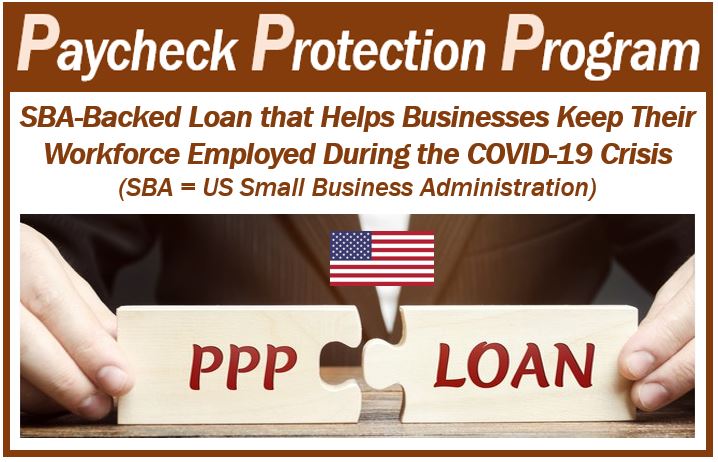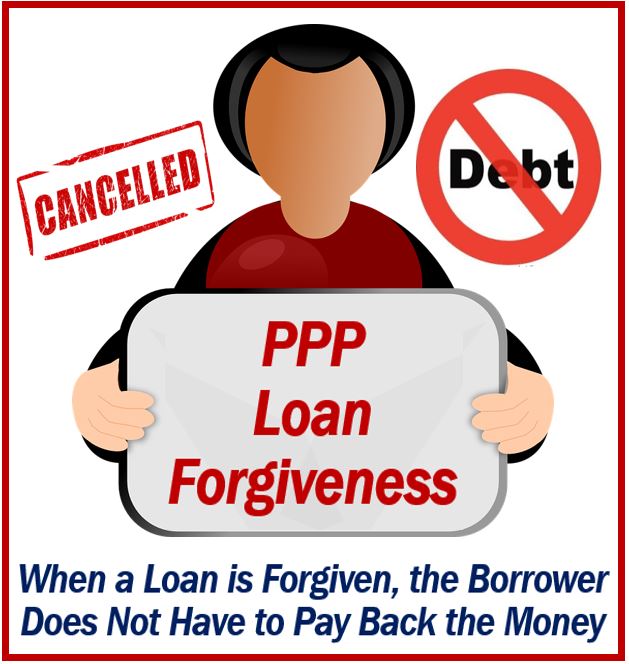Businesses, especially small businesses, have been hit hard by the slow economy caused by the pandemic.
As a way to slow the spread of COVID, cities across the country shut down. So, to stay afloat during that time, many businesses have received Paycheck Protection Program (PPP) loans, worked out a tax deduction for car insurance and other expenses, and even asked for deferments on some bills.
However, outside of other financial relief programs offered, there is now a chance for business owners to get parts of their PPP loans forgiven. As a business owner, understanding what PPP loans are, how to manage them, and what steps you should take to apply for forgiveness can save you hundreds of thousands of dollars.

What is PPP loan forgiveness?
When in a financially draining situation, you may be considering filing bankruptcy. Though, before you make the decision, there are a few things to consider before you file for bankruptcy, especially if you have taken out a PPP loan.
The PPP helps small businesses with payroll and operating expenses. Sole proprietors, self-employed workers, independent contractors, and side gig workers are all eligible for this loan.
The PPP loan forgiveness program allows borrowers to have their loans forgiven if they use the funds for designated expenses. Authorized expenses spent over 24 weeks (or eight weeks if the loan was disbursed before June 5, 2020) after participants received their loan disbursements are eligible for loan forgiveness.
All payroll payments can be forgiven and up to 40% of mortgage interest, rent, and utilities can be forgiven. Some businesses are even eligible for total forgiveness of their entire loan amount.
Requirements for PPP Loan Forgiveness

To qualify for forgiveness, participants must maintain compensation and staffing levels during the covered period.
The covered period for loan forgiveness in 2020 is 24 weeks after your loan was disbursed and an eight-week period if the loan was issued before June 5, 2020. Those who are getting the loan in 2021 can choose between a covered period from eight to 24 weeks.
To get all of your PPP loan forgiven, you have to spend at least 60% on payroll and the rest of the loan disbursements on expenses that are permitted, you cannot cut employees’ salaries or wages, and your full-time employee headcount cannot drop lower than the average monthly levels during 2019 or over the last 12 months.
When considering the average headcount for PPP loan forgiveness requirements, businesses started during the second half of 2019 can use average headcount estimates between January 1, 2020, and February 29, 2020.
Seasonal businesses can base their monthly headcount averages from February 15, 2019, or March 1, 2019, to June 30, 2019.
Fortunately, there are exceptions and an extended time period to rehire full-time employees. If you cannot rehire those you have fired, cannot find qualified replacements, or cannot return to the pre-pandemic level of business activity, you will be given an exception with the headcount requirements.
You also have until December 31 to rehire enough full-time employees to reach your average headcount goal.
Expenses That Are Eligible for Loan Forgiveness
As mentioned above, certain expenses are permitted when seeking approval for the PPP loan forgiveness program. Originally, payroll and operating expenses were the only costs eligible for forgiveness, but the relief bill passed in December 2020 expanded eligibility.
Expenses related to health and safety enhancements, some property damage, and supplier costs were included in the expanded December 2020 coronavirus relief bill. Here are more details on expense eligibility:
- Worker protection: Costs related to safety and health requirements such as installation of barriers and health screenings and employed personal protective equipment are all eligible expenses. Any equipment or material used to protect your employees is permitted.
- Property damage: Repair money for damage or loss because of looting caused by public disturbances are eligible expenses. However, if your insurance paid for the repairs, then the repair costs are not eligible.
- Payroll costs: Wages paid, tips, commissions, bonuses, and employer-paid benefits like sick leave and retirement contributions are permitted. Employees that earned more than $100,000 per year are not eligible for forgiveness.
- Supplier costs: Costs of goods that are key to operating and maintaining your business are permitted expenses only if the contract to purchase the goods was active before the period of time PPP loans covered.
- Operating costs: Rent, mortgage and interest, utilities, accounting help, and any software used for operating the business are permitted business costs.
How To Apply for PPP Loan Forgiveness
Loans affect your credit score, especially if you are unable to repay them. So the best time to apply for PPP loan forgiveness is before you have to make a single loan payment.
You can apply for loan forgiveness right when you have spent all of the money disbursed to you or as late as right before your final loan payment is due. PPP loan payments are deferred for 10 months after the eight- to 24-week covered period.
However, you cannot apply for forgiveness after you have made your final loan payment. Loan maturity is five years if the loan was issued after June 5, 2020, and two years if it originated before that date.
You should contact your PPP lender when you want to apply for loan forgiveness. The representative will detail how to apply and provide you with the right loan forgiveness form you need to complete.
After completing the form, you need to submit that and any documentation outlining how the loan money was used for your business. If you borrowed less than $150,000, you can use the simple form without providing additional documentation.
Documentation You Need for PPP Loan Forgiveness
Though first-draw loan borrowers who received less than $150,000 do not have to provide additional documentation, you may have to if you also borrowed money from the second draw.
You will be required to provide documentation detailing revenue loss before receiving loan forgiveness. The list of documentation needed if you borrowed $150,000 during the first draw or if you borrowed money during the second draw are:
- State and local quarterly financial reports
- State unemployment insurance filings
- Third-party payroll reports
- Bank statements
- Payment receipts
- Canceled checks
- Employer health and retirement contribution statements
- Utility and business operation expense payments receipts
- Purchase orders
- Contracts and their respective vendor receipts
- Any tax documents (1040 Schedule C, Schedule F, Form 1065, Schedule K-1, Form 941, Form 944, Form W-2, or Form W-3)
As a reminder, funds spent on permitted expenses will only be forgiven and at least 60% of your PPP loan needs to be spent on payroll to get your entire loan amount forgiven.
About the Author

Imani Francies writes and researches for the auto insurance comparison site, AutoInsuranceEZ.com. She has a passion for simplifying complicated topics such as loans and insurance for her readers.

